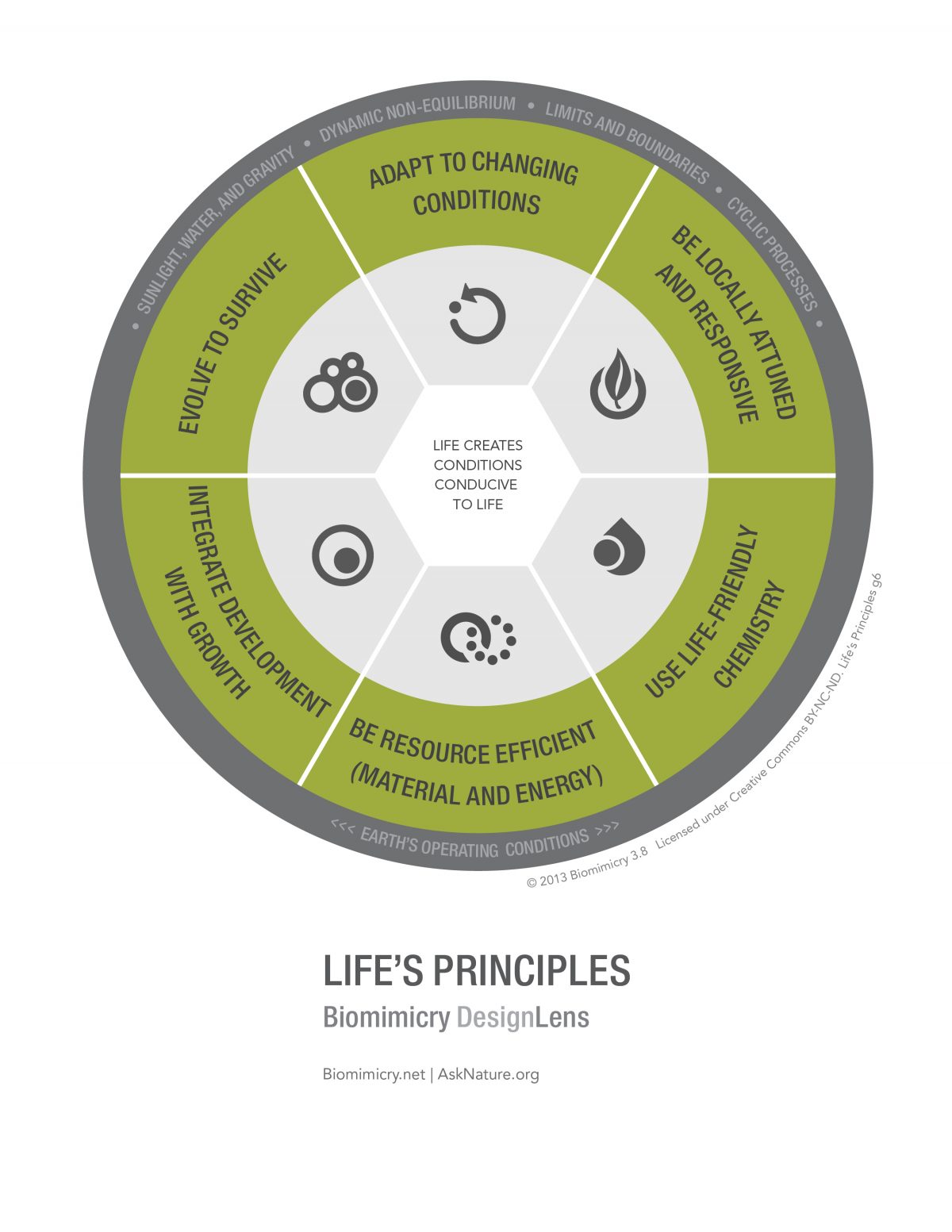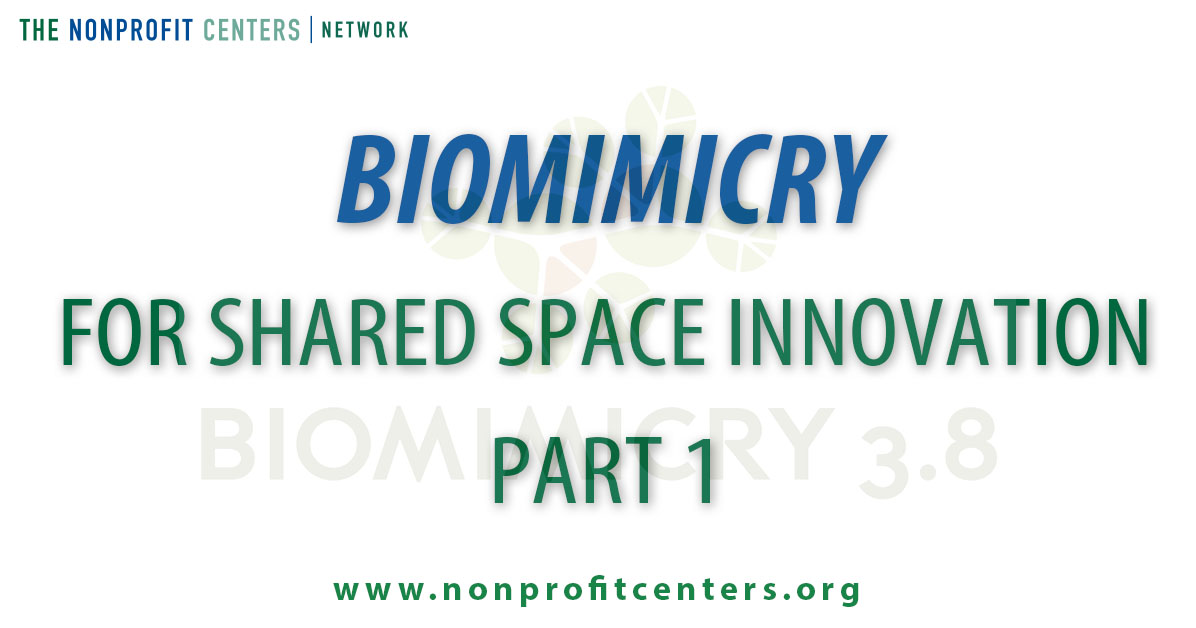Biomimicry for Shared Space Innovation – Part 2
Introduction
I never thought I would dabble in ecology. In the artificial divide between the arts and sciences in grade school and beyond, I was categorized as creative-by default, I think-since I did not display a natural aptitude for STEM subjects. Recently, however, I’ve found a point of entry into the scientific realm through Biomimicry, an approach to innovation that seeks sustainable solutions to human challenges by emulating nature’s time-tested patterns and strategies. This merging of ecology with the creativity needed to problem solve has helped me frame much of my work in a shared space ecosystem.
A biomimicry-based approach makes sense in the era of co-working and co-locating, as nurturing healthy ecosystems is a priority for many shared-space managers. Biomimicry provides the methods and metrics for designing systems that support individuals, serve the greater community, and enhance economic viability-as long as we look to nature for lessons on what ecosystem is and how it functions.
Unfortunately, the term ecosystem has lost power since its introduction to business vernacular in the 1930’s. Its impotence may be traced, in part, to a social-Darwinistic understanding of competition in the natural world. Survival of the fittest, a core principle in the application of Darwin’s theories to human systems, has been portrayed as a rivalry between organisms for limited resources. However, true natural selection refers to the selection of traits and behaviors in genetic material over time, and not to a constant state of competition over scarce assets. This is an important distinction because, at their best, shared-space projects reduce the pressure of scarcity and promote collaboration and co-evolution.
From a Biomimicry point of view, if we are going to treat human organizations as ecosystems, then we have to abandon metaphor and extract more specific lessons from the natural world.
Biomimicry helps us do this through Life’s Principles- a design lens that accounts for the interdependence of all living things. When applied in the realm of social innovation, these principles illuminate many useful applications, including, in our case, strategies for reinvigorating shared spaces. In total, there are six Life’s Principles-three of which we will take on in this article, and three of which will appear in the next. I’ll briefly explain the principles, present an application of them in within a shared-space project, and hopefully show how applying the principles provides a pathway to successful ecosystem stewardship.
Life’s Principles 
Principle 1: Use Life-friendly Chemistry
This is perhaps the easiest-to-apply strategy. Chemistry provides the building blocks of human invention, and life-sustaining practices can and should inform developing and experimenting with these building blocks. Janine Benyus, biomimicry’s foremother and leading practitioner, says, “Life can’t put its factory on the edge of town; it has to live where it works.”
Principle at Work in Nature
Living organisms use life-friendly chemistry because employing ingredients that would cause harm is not conducive to survival. An article in Wired magazine called Strange Biology Inspires the Best New Materials brings attention to bio-inspired materials and their inspiration in the natural world. For example, they report on the genius of mussels: “Despite the constant turbulence of tides, mussels manage to stay attached to their slippery, rocky homes. Their secret is a massively strong, sticky adhesive — now the target of scientists hoping to replicate it.”
Application to Shared Spaces
At the Community Building Campus, we keep this in mind within our daily operations. Although not immediately visible to most visitors or tenants, we know that behind the scenes micro-decisions, when scaled, are better for people and can positively impact the environment. We always work with low or no VOC paints and use cleaning products that are nontoxic. We make these choices because we want people to be healthy. We also want peace of mind from knowing that, if someone has cancer from carcinogens, at least they weren’t exposed to it in our buildings.
Principle 2: Be Resource Efficient
Resource efficiency is critical for growth and survival. When energy is conserved in one area, it can be engaged in other life-giving processes.
Principle at Work in Nature
The principle refers to both materials and energy. Nautilus shells have air chambers that allow it to move vertically in the water as they search for food. The nautilus has used a material that all mollusks employ-their hard shells-and, with slight modification, repurposed it as a low-energy navigation device.
Application to Shared Spaces
Like many shared spaces, some of our resource efficiencies come from management, and other come from tenants. For example, management handles infrastructure contracts, such as such as phones, Internet, water, and utilities. Tenants, on the other hand, self-organize around things like copiers and kitchen supplies on their respective floors. These cost and time savings have the potential to translate into diversification of programs and staff into other areas.
Currently, we are designing a biomimicry-based survey to help us better name and measure the ecosystem services. Ecosystem services are the many and varied benefits gained by individuals, organizations, the greater community, and the natural world thanks to shared-space collaborations. We expect a lot of the ecosystem services to come out of resource efficiencies.
Principle 3: Integrate Development with Growth
This could be the mantra of all healthy ecosystems. Integrating development with growth means thinking beyond growth as an unexamined goal, and thoughtfully asking, “How are we growing” and “What could be more efficient and better for the whole system along the way?
Principle at Work in Nature
Vertebrates develop bones that are unique to them. As vertebrates grow, their bone cells adapt to their environment and in coordination with the needs of the rest of the body. This function ensures that bones do not develop too large or small, and allows bone cells to respond to areas of stress and injury, which promotes healing.
Application to Shared Space Innovation
We hire staff with diverse skill sets, so they can continue to support the organization as it evolves. Similarly, staff are given freedom to develop programs and skills that align with their interests and passions, which means the system shifts with the injection of their strengths.
On example of this is my involvement in communications work and succession planning. I was hired on as an administrative assistant, and I have grown into project management role as ideas that I brought to the table were deemed beneficial to the organization and our tenants. To date, a lot of my project-management work has revolved around outreach and communications. Now that we are looking at next steps for our organization, the work that I’ve done in branding and storytelling has become useful in succession planning. I have been able to use the relationships I developed through communications work to establish new feedback loops that we can integrate as we decide how our system is evolving.








